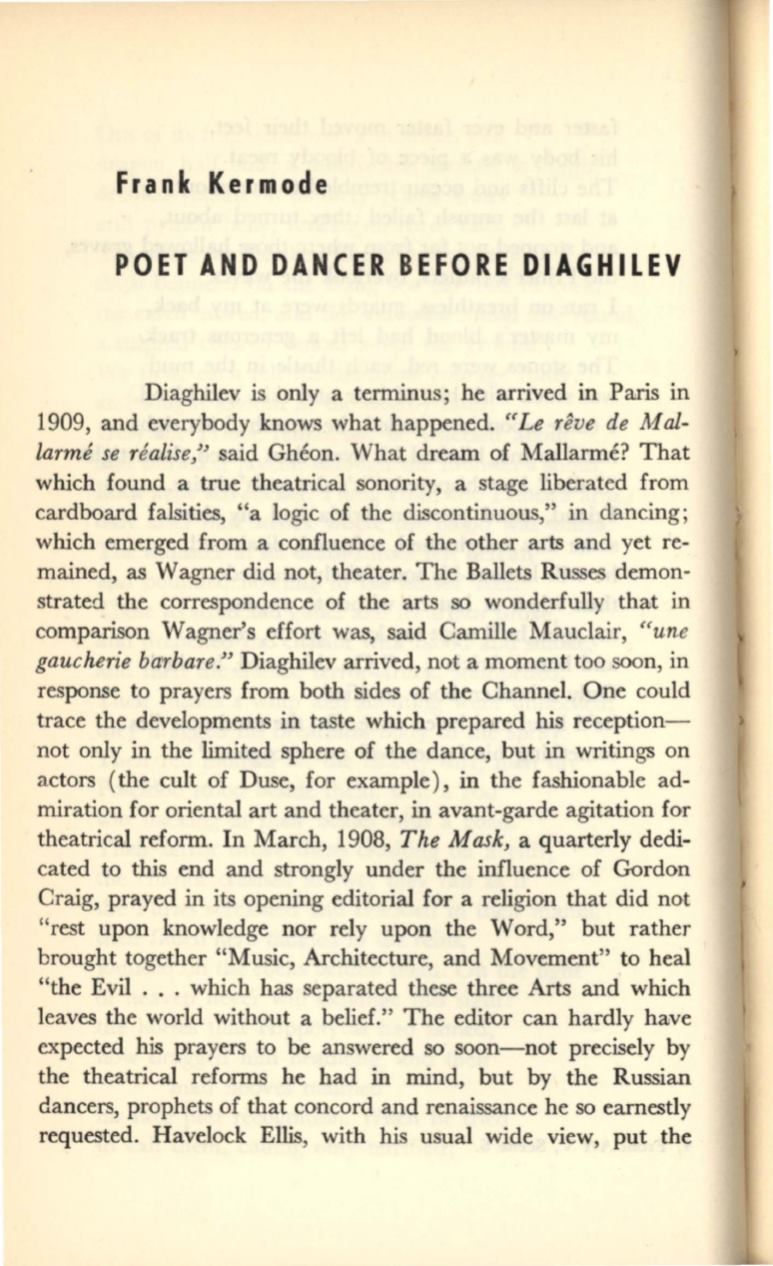
Frank Kermode
POET AND DANCER BEFORE DIAGHILEV
Diaghilev is only a terminus; he arrived in Paris
in
1909, and everybody knows what happened.
((Le reve de Mal–
larme se realise,"
said Gheon. What dream of Mallarme? That
which found a true theatrical sonority, a stage liberated from
cardboard falsities, "a logic of the discontinuous,"
in
dancing;
which emerged from a confluence of the other arts and yet re–
mained, as Wagner did not, theater. The Ballets Russes demon–
strated the correspondence of the arts so wonderfully that in
comparison Wagner's effort was, said Camille Maudair,
((une
gaucherie barbare."
Diaghilev arrived, not a moment too soon, in
response to prayers from both sides of the Channel. One could
trace the developments in taste which prepared his reception–
not only in the limited sphere of the dance, but in writings on
actors (the cult of Duse, for example), in the fashionable ad–
miration for oriental art and theater, in avant-garde agitation for
theatrical reform.
In
March, 1908,
The Mask,
a quarterly dedi–
cated to this end and strongly under the influence of Gordon
Craig, prayed
in
its opening editorial for a religion that did not
"rest upon knowledge nor rely upon the Word," but rather
brought together "Music, Architecture, and Movement" to heal
"the Evil .. . which has separated these three Arts and which
leaves the world without a belie£." The editor can hardly ha,ve
expected
his
prayers to be answered so soon-not precisely by
the theatrical reforms he had
in
mind, but by the Russian
dancers, prophets of that concord and renaissance he so earnestly
requested. Havelock Ellis, with his usual wide view, put the


